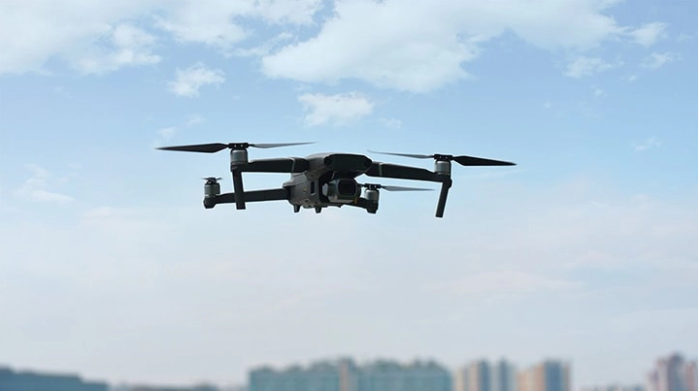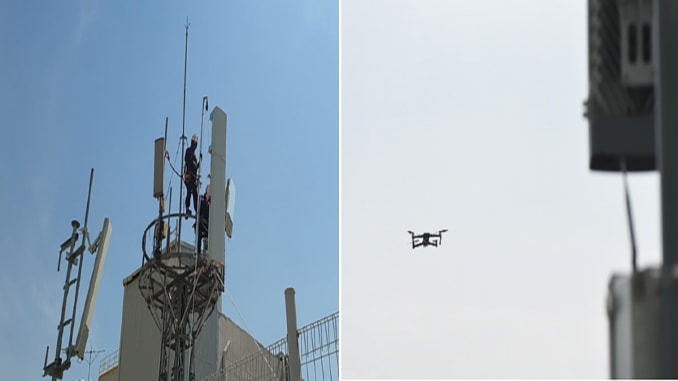
Samsung Electronics Co., Ltd. announced the demonstration of its new drone-based antenna configuration measurement solution for 4G and 5G networks in the company’s campus. This automated solution will offer operators a simplified way to more efficiently manage cell sites, improve employee safety, and ultimately optimize network performance.

In the demonstration, an engineer on the ground used a smartphone with a remote control application to fly a camera-equipped drone that captured photos of the antennas installed on a building’s rooftop. The visual data was viewable via the engineer’s smartphone and then was transmitted to a cloud server within seconds. The deep learning-based artificial intelligence (AI) solution instantly verified the rotation and tilt of the antennas, so that the engineers could determine if the antennas were installed correctly at predefined optimal angles.
It took less than a minute to transmit the data and process the results, enabling the engineer to view results on-site in real-time on the smartphone screen. The demonstration verified that Samsung’s solution can accomplish the task within 15 minutes – starting from flying the drone to the delivery of measurement results. This compares to the several hours it can take for a tower climber to prepare, climb up and down a cell tower, and measure antenna configurations.

In conjunction with this new solution, Samsung will continue to add additional features, which will allow the engineers to remotely adjust the antenna tilts to its optimal position from a mobile device and PC.
Cellular antennas are typically installed at significant heights on sites such as cell towers or rooftops, in order to ensure optimal mobile coverage. Operator field engineers ordinarily carry heavy and expensive equipment as they climb up cell sites to measure the antenna configurations. With Samsung’s drone-based AI solution, operators will have a new approach for reinforcing the safety of their employees.
The solution’s safety benefits will be especially helpful during site audit and maintenance in the U.S., which often requires two field personnel to be dispatched to a site to audit or adjust the antenna angles — and requires climbs that use more advanced safety training.